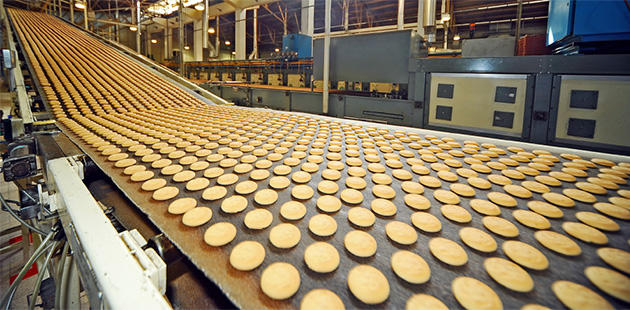Manufacturing Innovation Blog
Powered by the Manufacturing Extension Partnership

What do a McDonalds French fry supplier (J.R. Simplot Company), Starbucks Coffee, and Béquet Caramels have in common? Two things it turns out. First, they’re part of the food processing industry: the country’s second largest manufacturing sector by employment, fourth largest manufacturing sector by establishments, and an industry group that accounts for over 10% of all manufacturing shipments. Everyone has to eat!
Let’s take a closer look at this strong manufacturing sector. Considering where the jobs are, it appears to be an industry with a wide footprint. The International Trade Administration (ITA) [1] reports there were 28,000 food processing establishments in the U.S. in 2006, with 500 multinationals like Kraft, Tyson Foods, and General Mills making up 36% of total employment. However, 89% of food processors employ fewer than 100 employees (which is the typical industry demographic served by MEPs). Where are all these good people who are making our food? The largest portion of the workforce is in California (11%), then Texas (7%), Illinois (6%), and Pennsylvania (5%); the remaining 70% are pretty evenly spread out across the U.S.
And it looks like the industry’s future is strong. According to a 2010 IMAP report,[2] 58% of food produced is consumed by developing countries. This is expected to increase to 72% by 2050 as populations in China and India continue to grow in numbers and income. Regarding international consumer trends, the U.S. Department of Agriculture Economic Research Service writes “…changes in food consumption patterns are largely driven by income growth and demographic factors…urbanization, away-from-home employment of women, and increased levels of information.”[3]
Another thing happening in the industry is that prepared foods in the U.S. are also on the rise and driving innovation. A recent Wall Street Journal article The Art of Almost Homemade [4] highlighted this trend. (Side note: Wednesdays are apparently the worst day for cooking at home and when partially prepared foods are most helpful.) This has led to a number of innovations by larger food companies. Some examples include putting parchment paper in a kit for cooking fish, or producing a two-step sauce so people feel they are more involved in the cooking process and closer to enjoying homemade meals.
So what’s the second thing J.R. Simplot Company, Starbucks Coffee and Béquet Caramels all have in common? They’ve been clients of the MEP system, served by the centers in Idaho, Washington, Nevada and Montana primarily in areas of operational efficiencies to support rapid and continuous sales growth. At least three MEP centers have specialized food practices, including Idaho TechHelp, Ohio’s Center for Innovative Food Technologies and Nebraska’s Lincoln Food Processing Center. These capabilities have been used across the MEP system through a local center. If you’re in the business of processing food to feed our world, be sure to reach out to your local MEP and see how they can assist you. If you’re partial to caramels, allow me to suggest Béquets! ____________________________________________________________________________________
[1] U.S. Department of Commerce Industry Report Food Manufacturing NAICs 2011
[2] IMAP Food and Beverage Industry Global Report - 2010
[3] USDA ERS International Consumer & Retail Trends webpage http://www.ers.usda.gov/topics/international-markets-trade/global-food-… August 8, 2013
[4] The Art of Almost Homemade by Sarah Nassauer, Wall Street Journal web edition August 6, 2013
About the author
Related Posts
Comments
- Reply


